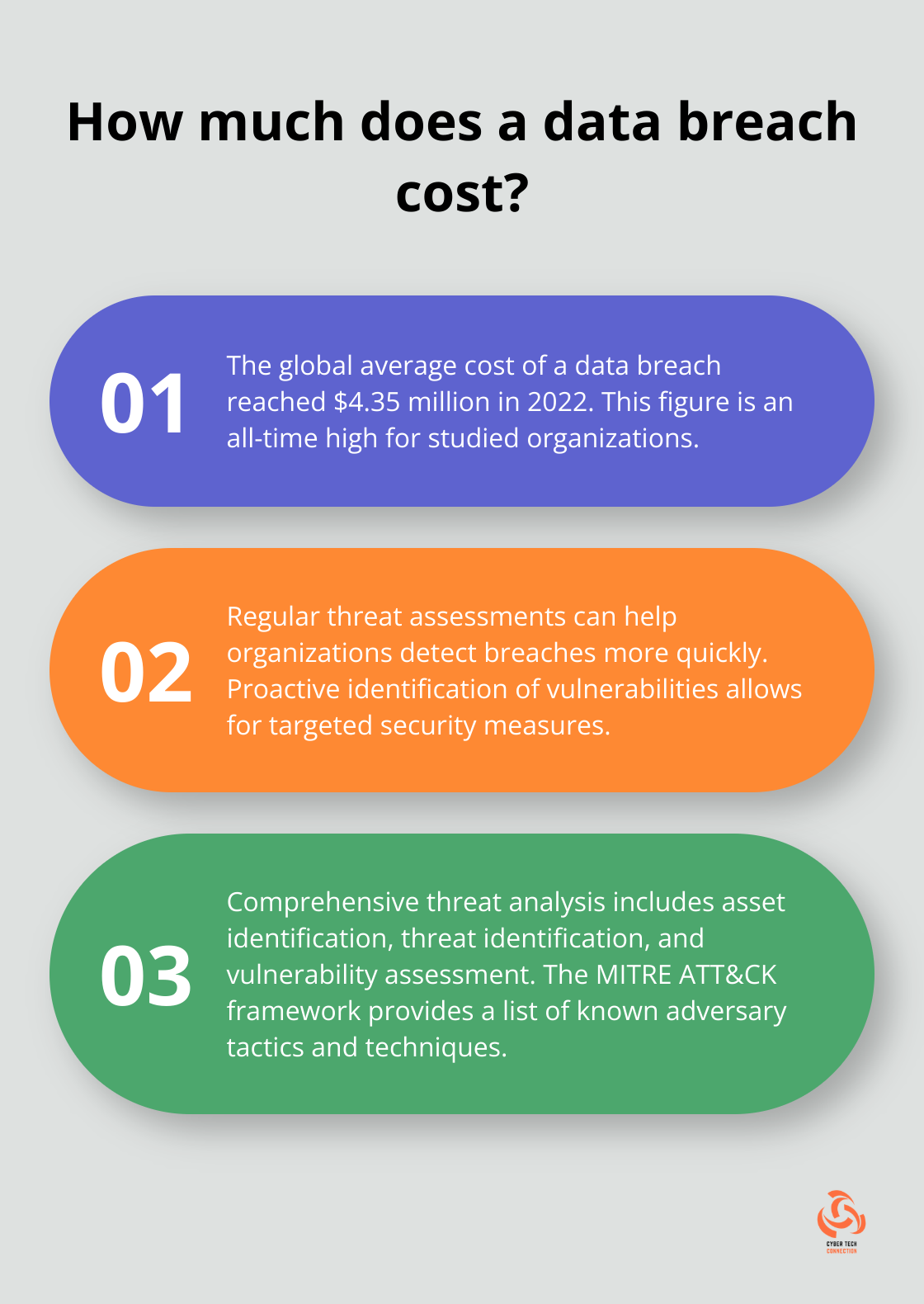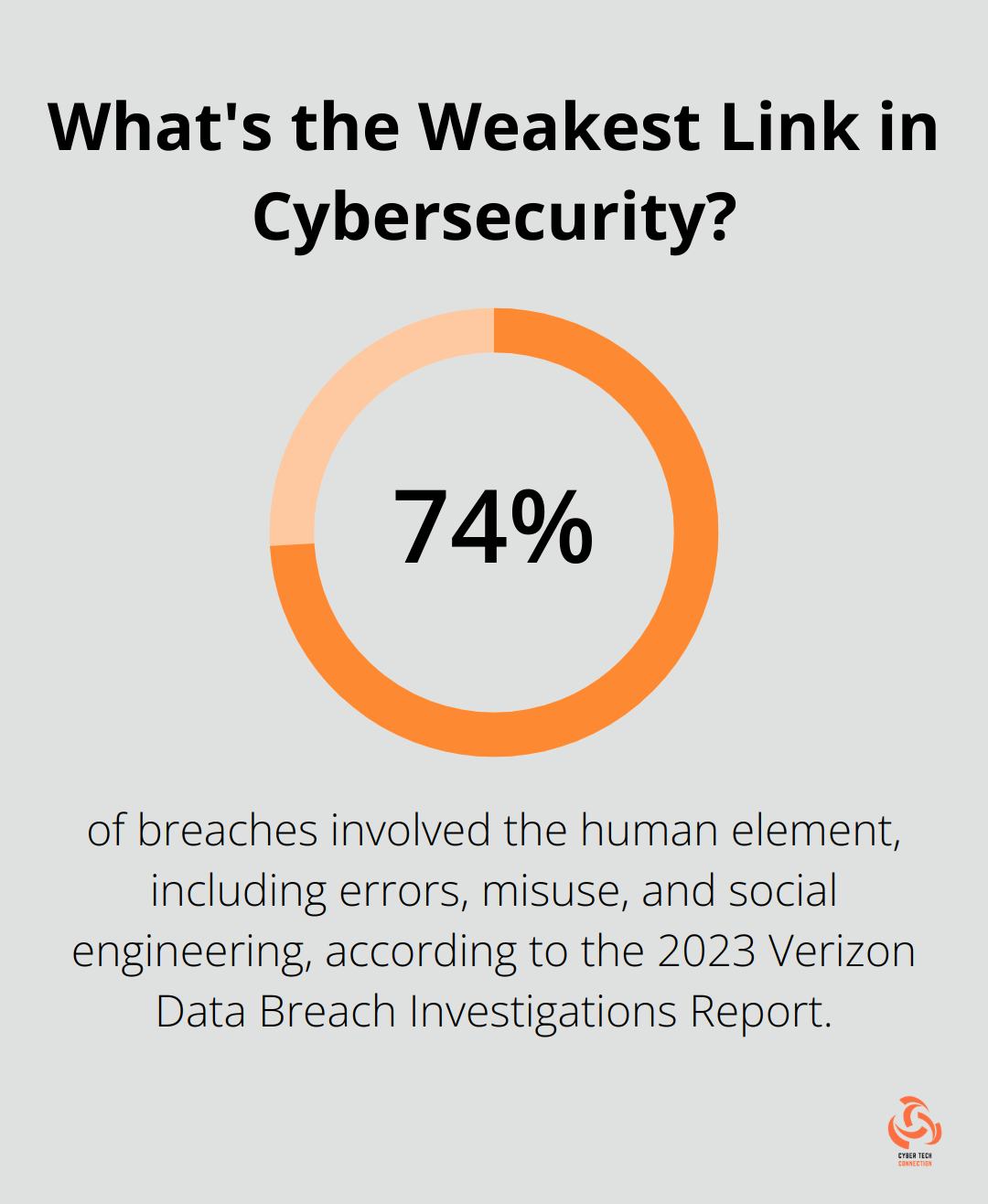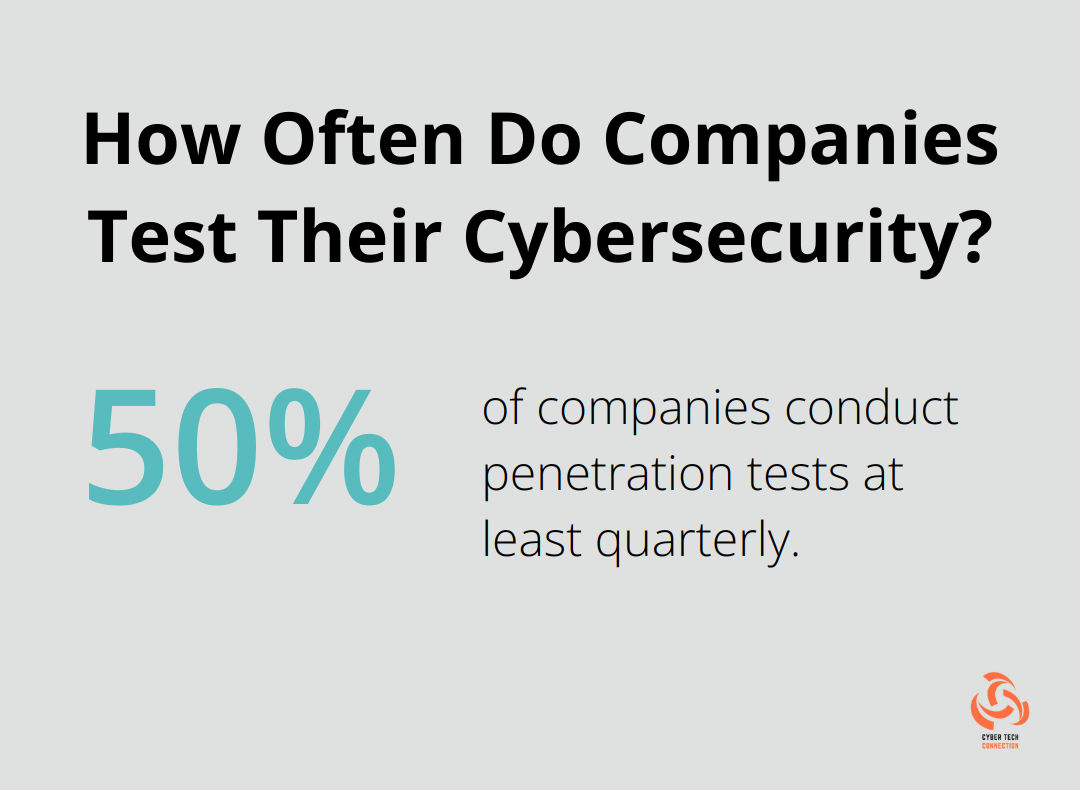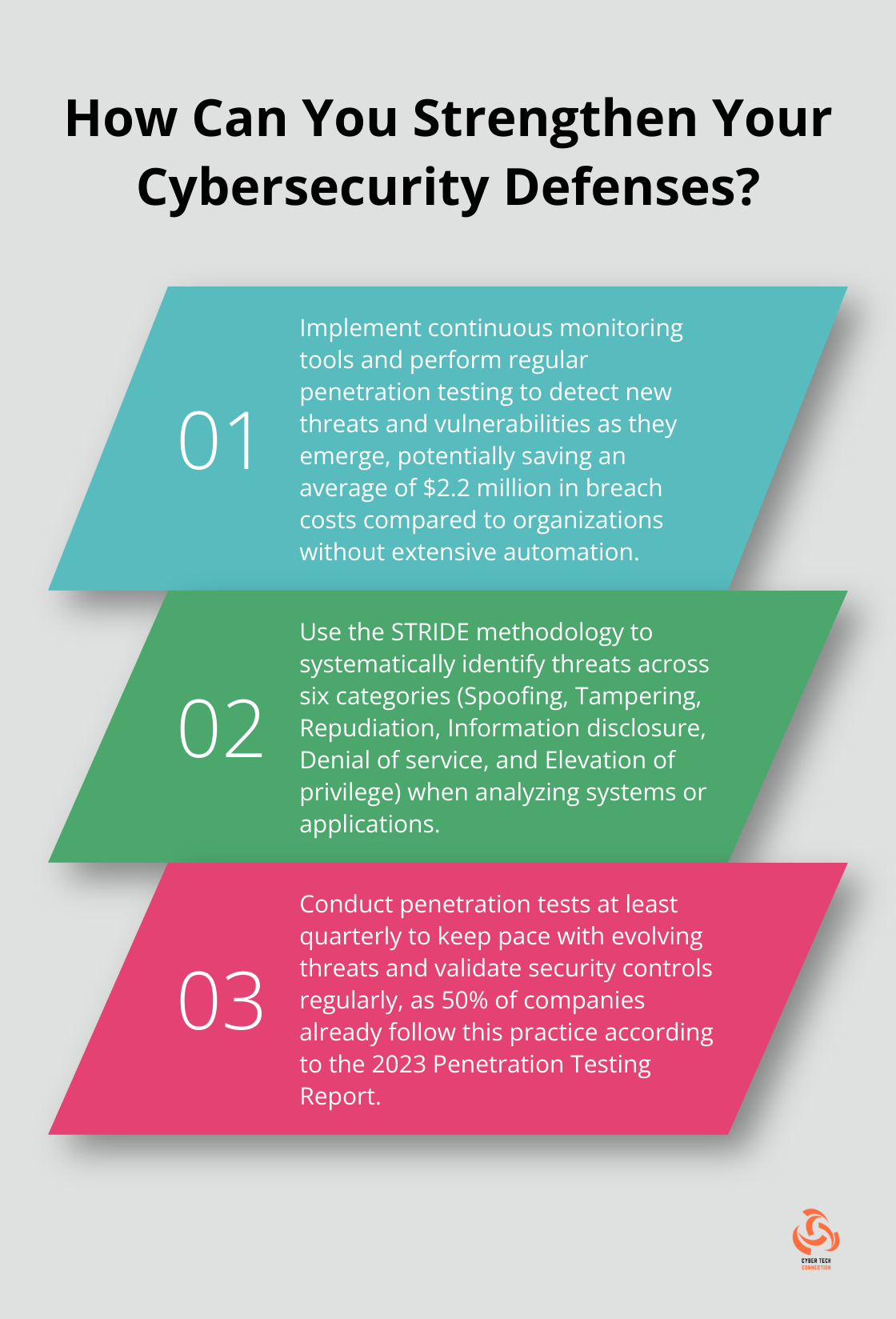At CTC, we know that security threat analysis is vital for protecting organizations from cyber attacks. This process helps identify vulnerabilities, assess risks, and develop strategies to safeguard critical assets.
In this blog post, we’ll guide you through the steps of performing an effective security threat analysis. We’ll also explore useful tools and techniques to enhance your threat assessment capabilities.
What is Security Threat Analysis?
Definition and Scope
Security threat analysis is a systematic process that identifies, evaluates, and prioritizes potential risks to an organization’s assets, data, and operations. It forms the foundation of a robust cybersecurity strategy, enabling businesses to understand and address the threats they face.
The Critical Nature of Threat Analysis
The IBM Cost of a Data Breach Report revealed that in 2022, the global average cost of a data breach reached an all-time high of $4.35 million for studied organizations. This staggering figure underscores the essential nature of threat analysis. Proactive identification of vulnerabilities allows organizations to implement targeted security measures, potentially saving millions in breach-related costs.
Core Components of Threat Analysis
A comprehensive threat analysis encompasses several critical elements:
- Asset Identification: You must catalog what you need to protect. This includes physical assets, data, intellectual property, and even reputation.
- Threat Identification: Research and document potential threats, from common malware to sophisticated nation-state attacks. The MITRE ATT&CK framework provides an excellent resource, offering a comprehensive list of known adversary tactics and techniques.
- Vulnerability Assessment: Evaluate how susceptible your assets are to identified threats. Tools like Nessus or OpenVAS (popular vulnerability scanners) can automate much of this process.
Advantages of Regular Assessments
Regular threat assessments offer numerous benefits:
- Proactive Defense: Organizations stay ahead of evolving threats, ensuring that security measures remain effective.
- Faster Breach Detection: Regular security assessments can help organizations detect breaches more quickly.
- Compliance Support: Many regulations (e.g., GDPR and HIPAA) require regular risk assessments. Thorough threat analyses demonstrate due diligence and help avoid non-compliance fines.
Practical Implementation Strategies
To implement effective threat analysis:
- Establish a Regular Schedule: Quarterly assessments provide a good baseline for most organizations.
- Involve Cross-Functional Teams: Include stakeholders from IT, HR, legal, and operations to gain diverse insights into potential threats and vulnerabilities.
- Leverage Threat Intelligence: Use platforms like ThreatConnect or AlienVault OTX to access real-time threat data, helping you anticipate potential attacks.
- Automate Where Possible: Utilize security information and event management (SIEM) tools to collect and analyze security data from multiple sources.
- Conduct Regular Training: Ensure your team stays updated on the latest threat analysis techniques and emerging cybersecurity trends.
As we move forward, it’s important to understand the specific steps involved in performing an effective security threat analysis. Let’s explore these steps in detail in the next section.

How to Conduct a Security Threat Analysis
Asset Inventory and Criticality Assessment
Start your security threat analysis with a comprehensive inventory of all assets. This includes hardware, software, data, and intangible assets like reputation. Use automated discovery tools to ensure completeness. After creating the inventory, assess the criticality of each asset. Ask: What impact would a compromise have? How essential is it to operations?

For instance, a healthcare provider might rank patient data as highly critical, while a manufacturing company might prioritize production systems. Assign criticality scores to each asset to guide your analysis.
Threat and Vulnerability Identification
Identify potential threats and vulnerabilities for each asset. Use threat intelligence feeds and vulnerability databases to stay updated on the latest risks. The National Vulnerability Database (NVD) provides an excellent resource for this task.
Don’t overlook insider threats. The 2023 Verizon Data Breach Investigations Report revealed that 74% of breaches involved the human element (including errors, misuse, and social engineering).
Risk Assessment and Prioritization
Assess the likelihood and potential impact of each identified threat. Use a risk matrix to visualize and prioritize risks. A highly likely threat with severe impact should top your priority list.
Consider the FAIR model for a more quantitative approach. This standard quantitative framework helps understand, analyze, and quantify information risk in financial terms.
Mitigation Strategy Development
Develop strategies to address your highest priority risks. These could include technical controls (like firewalls and encryption) or administrative controls (such as policies and training programs).
For mobile devices, implement a Mobile Device Management (MDM) solution. Cyber Tech Connection’s Mobile Phone Defense service protects against malware and unauthorized access, which is essential in today’s mobile-first world.
Continuous Monitoring and Adaptation
Implement continuous monitoring tools to detect new threats and vulnerabilities as they emerge. Regular penetration testing helps identify weaknesses before attackers do.
A study found that organizations deploying security automation technologies incurred an average $2.2 million less in breach costs, compared to those without extensive automation across prevention workflows.
The next section will explore advanced techniques and methodologies to further refine your threat analysis process, taking your security posture to new heights.
Advanced Tools for Threat Analysis
Threat Modeling with STRIDE
The STRIDE methodology serves as a powerful tool for threat modeling. Developed by Microsoft engineers, it accounts for six different threat categories: Spoofing, Tampering, Repudiation, Information disclosure, Denial of service, and Elevation of privilege. A systematic consideration of each category allows the identification of a wide range of potential threats to systems.

For example, when analyzing a web application, one might consider spoofing threats like phishing attacks, tampering threats like SQL injection, and information disclosure threats like insecure data storage. This structured approach ensures no major threat categories are overlooked.
Quantifying Risk with DREAD
The DREAD model helps quantify the severity of identified threats. It considers five factors: Damage potential, Reproducibility, Exploitability, Affected users, and Discoverability. Each factor receives a rating on a scale, typically from 1 to 10.
A vulnerability that could lead to full system compromise might score high on Damage potential (9) and Affected users (8), but low on Reproducibility (3) if it requires specific conditions. The average of these scores provides a numerical risk rating that helps prioritize mitigation efforts.
Visualizing Attack Paths
Attack trees and threat mapping are visual techniques that help analyze how an attacker might compromise a system. The process starts with the attacker’s goal at the top of the tree, then branches out to show different paths to achieve that goal.
For a financial system, the top-level goal might read “Steal funds”. Branches could include “Exploit software vulnerability”, “Phish employee credentials”, and “Insider threat”. This visual representation helps identify the most likely or dangerous attack paths to focus on.
Leveraging Automated Intelligence
Automated threat intelligence platforms aggregate and analyze data from multiple sources to provide real-time insights into emerging threats. These platforms can significantly enhance threat analysis capabilities.
Some platforms use containerized microservice architecture for real-time cyber threat intelligence detection from online sources. This approach can help identify trends and emerging threats relevant to specific industries or technology stacks.
Proactive Testing
Penetration testing and vulnerability scanning are proactive measures to identify weaknesses before attackers do. While automated scanners can quickly identify known vulnerabilities, manual penetration testing can uncover more complex issues.
The 2023 Penetration Testing Report by Core Security states that 50% of companies conduct penetration tests at least quarterly. This frequency allows organizations to keep pace with evolving threats and validate their security controls regularly.
Final Thoughts
Security threat analysis forms the foundation of modern cybersecurity strategies. It encompasses the identification of vulnerabilities, understanding of the threat landscape, and assessment of potential impacts on an organization. The process requires a continuous cycle of evaluation, mitigation, and adaptation to address evolving threats and changing organizational priorities.

Effective implementation of security threat analysis demands a comprehensive approach. Organizations must identify and categorize assets, utilize both manual analysis and automated tools, and develop targeted mitigation strategies. Robust monitoring systems play a vital role in detecting and responding to threats in real-time, while regular reassessments help maintain an adaptive security posture.
Cyber Tech Connection offers a range of services to support your security threat analysis efforts. Our expertise in areas such as mobile phone defense and penetration testing can enhance your organization’s protection against evolving cyber threats. Partner with us to strengthen your cybersecurity strategy and safeguard your valuable assets in today’s dynamic digital landscape.

